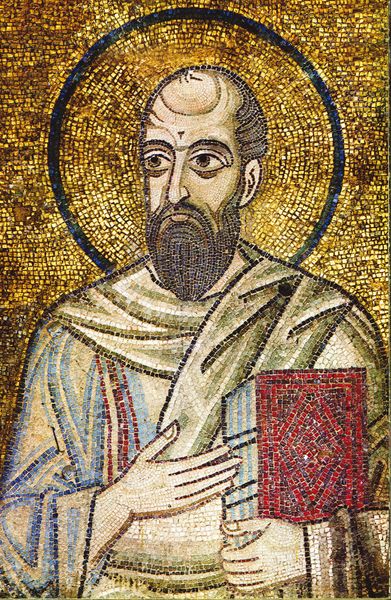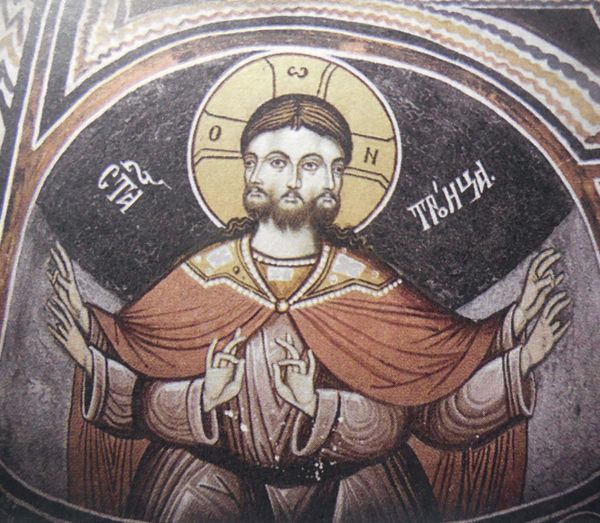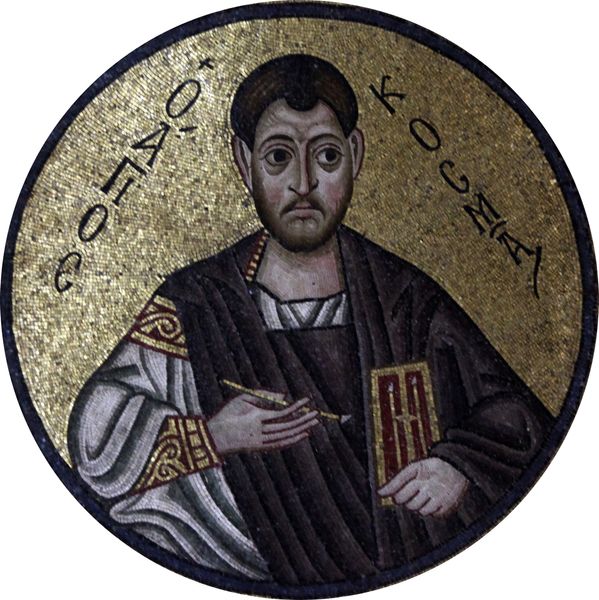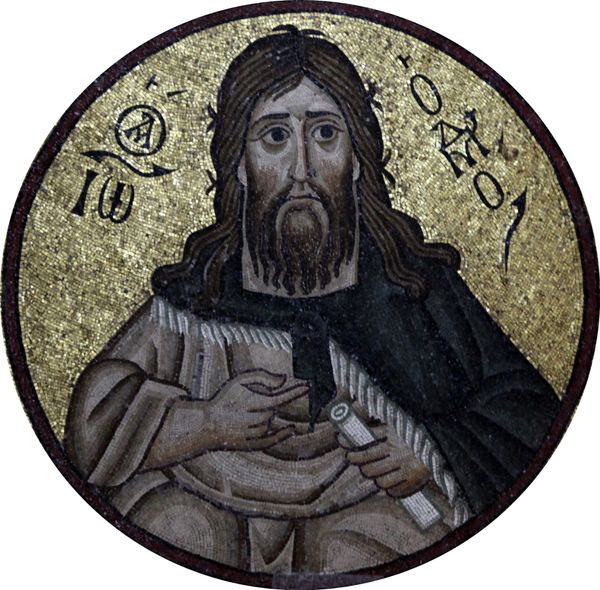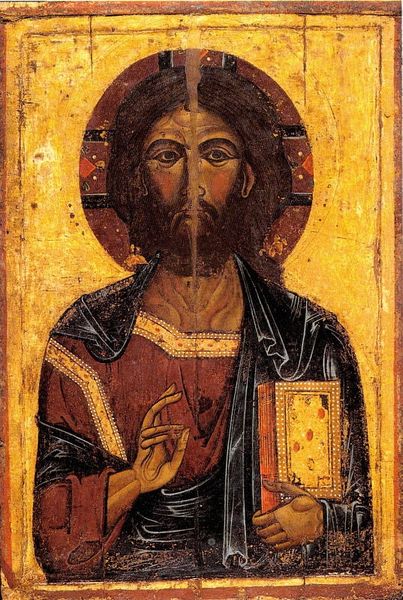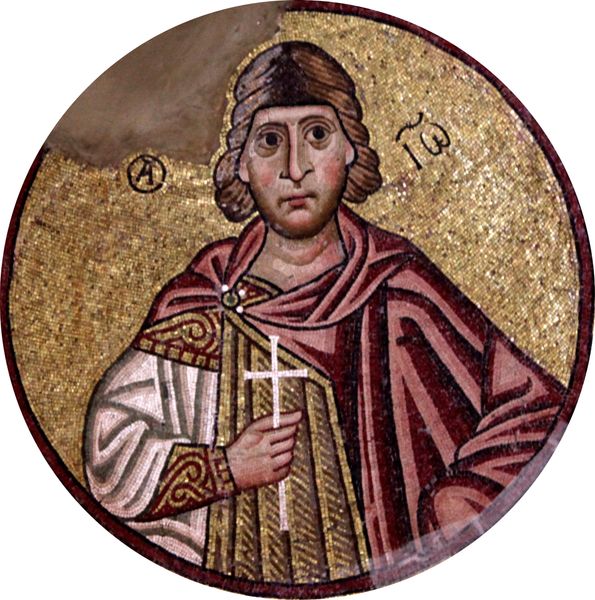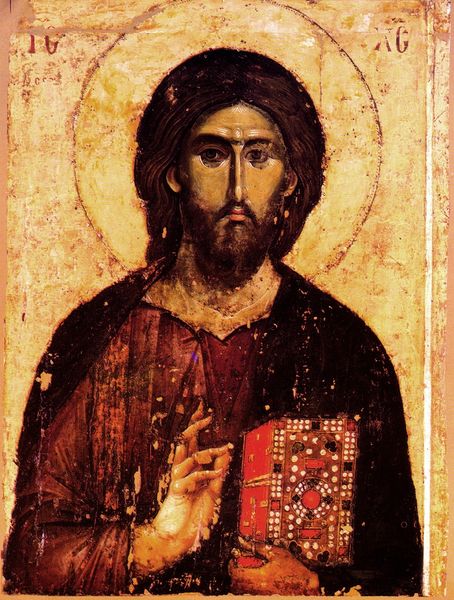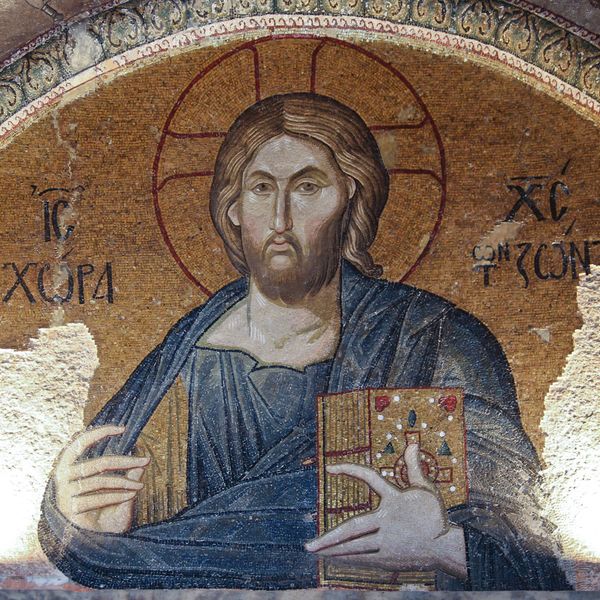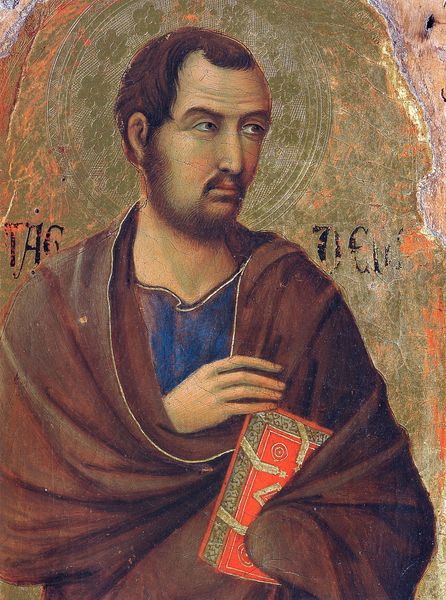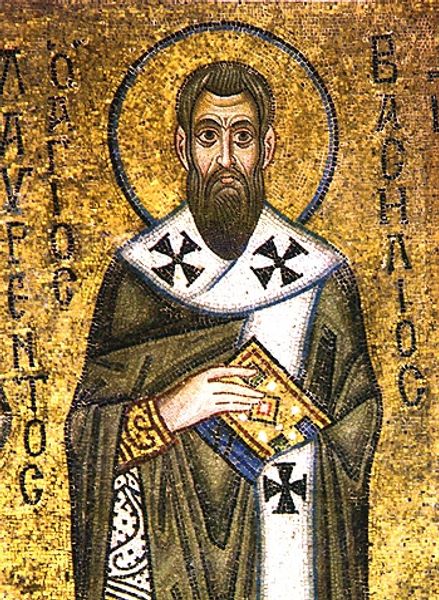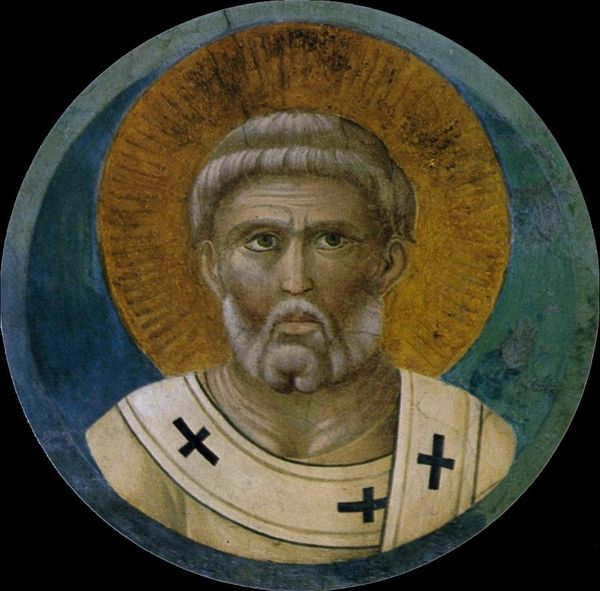
#
character portrait
#
prophet
#
portrait reference
#
portrait head and shoulder
#
animal portrait
#
animal drawing portrait
#
portrait drawing
#
facial portrait
#
portrait art
#
fine art portrait
#
digital portrait
Copyright: Public domain
This mosaic of St. James, made of small colored tiles, can be found in the Hosios Loukas Monastery in Greece, created during the Byzantine era. In Byzantium, religious images played a crucial role in spiritual and social life. Mosaics like this weren't just decoration; they were a way to connect with the divine. The choice of materials, like gold leaf for the background, was meant to evoke a sense of heavenly splendor. Monasteries like Hosios Loukas served as centers of religious art production, supported by wealthy patrons and the imperial court. These institutions controlled the narrative, dictating which stories were told and how. St. James, an important figure in the early church, was depicted in a conventional style, reinforcing the authority of religious teachings. As historians, we can dig deeper into the social and political context of Byzantine art through surviving texts and archeological records. Understanding these works means examining the interplay of religious belief, artistic technique, and the power structures that shaped their creation.
Comments
No comments
Be the first to comment and join the conversation on the ultimate creative platform.
